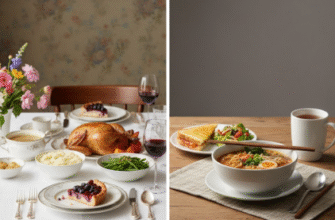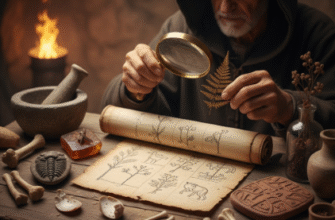When you picture a bride today, what comes to mind? Chances are, it’s an image bathed in white or ivory, a flowing gown symbolizing purity, joy, and the start of a new chapter. But rewind the clock, and you’ll find that the wedding dress hasn’t always been the white monolith we often assume it to be. Its journey is a fascinating tapestry woven with threads of tradition, status, royal influence, and ever-shifting fashion sensibilities. Let’s unpick the seams of wedding dress history.
From Practicality to Pageantry: Early Wedding Attire
Forget dedicated wedding dresses in ancient times or even the early Middle Ages. For most people, marriage was a practical union, and the attire reflected that. Brides simply wore their best dress, the one saved for special occasions, like attending church or festivals. The color wasn’t a major concern; practicality was key. Fabrics were chosen based on what the family could afford and what was suitable for their social standing. Deep blues, rich reds, greens, and even black were common, often chosen for their durability and ability to hide stains rather than any specific symbolism related to marriage.
For the aristocracy and the wealthy, weddings were also strategic alliances, and the bride’s attire was a billboard advertising her family’s wealth and status. Think luxurious fabrics like velvet, silk, damask, and even fur trims. Colors were vibrant, often achieved with expensive dyes, further signalling prosperity. Metallic threads of gold and silver might be woven in, and jewels sewn directly onto the garment. The dress wasn’t necessarily white; it was about making a statement of opulence.
Verified Fact: While white dresses appeared occasionally among European nobility before the 19th century, they weren’t the standard. Blue was often associated with purity (linked to the Virgin Mary), and other colours were chosen for practical or status reasons. Queen Victoria’s choice truly catalyzed the white wedding dress trend.
The Queen Who Changed Everything: Victoria’s White Revolution
The seismic shift towards white wedding gowns is largely credited to one monarch: Queen Victoria of England. When she married Prince Albert in 1840, she deliberately chose a white satin gown adorned with Honiton lace. Why white? It wasn’t solely about purity, although that association certainly grew later. At the time, white fabric was incredibly difficult and expensive to clean and maintain. Choosing white was a subtle but powerful declaration of status – it showed that the wearer was wealthy enough to afford a dress that was essentially impractical for repeated wear and could handle the cleaning costs.
Furthermore, Victoria wanted to showcase the beautiful Honiton lace, and white provided the perfect backdrop. Photos and illustrations of the royal wedding were widely circulated, and Victorian brides, eager to emulate their young queen, began adopting the white dress. It slowly transformed from a symbol of wealth to one associated with innocence, purity, and romantic love, cementing itself in the Western bridal tradition.
Entering the 20th Century: New Silhouettes Emerge
As the Victorian era gave way to the Edwardian period, silhouettes softened slightly, but the white gown reigned supreme. High necklines, long sleeves, and S-shaped corsets were characteristic. Then came the seismic shifts of the early 20th century.
The Roaring Twenties
The Jazz Age threw tradition out the window. Hemlines shot up, sometimes even reaching the knee! Waistlines dropped, corsets were abandoned, and silhouettes became much looser and more boyish, reflecting the newfound freedom women were experiencing. Wedding dresses followed suit, often featuring elaborate beading, fringe, and accompanied by cloche hats or ornate headbands instead of long veils. While white and ivory remained popular, champagne and pastel shades also appeared.
The Thirties and Forties
The Great Depression and World War II brought back a sense of conservatism and practicality. Movie stars influenced fashion, leading to more elegant, bias-cut satin gowns that hugged the figure gracefully in the 30s. During the war years, fabric rationing meant simpler designs. Many brides wore their best suit or borrowed a dress. If a new dress was made, it was often designed with practicality in mind, perhaps dyeable and wearable after the wedding. The focus shifted from extravagance back to meaning and making do.
Mid-Century Glamour and Beyond
The post-war boom in the 1950s saw a return to romance and femininity, heavily influenced by Christian Dior’s “New Look.” Ballgowns with nipped-in waists and full skirts became hugely popular. Lace sleeves and sweeter necklines dominated. Think Grace Kelly’s iconic wedding dress – elegant, timeless, and overtly feminine.
The Swinging Sixties and Groovy Seventies
Fashion rebellion marked the 60s and 70s. Wedding dresses became incredibly diverse. Some brides opted for mini-dresses reflecting the mod trend, while others embraced the flowing, ethereal empire lines and peasant-style dresses of the hippie movement. Sleeves ranged from non-existent to dramatic bells. Polyester blends gained popularity. Individuality started to take center stage over rigid tradition.
The Eighties Extravaganza
More was more in the 1980s! Influenced by the wedding of Princess Diana, gowns exploded with volume. Huge puff sleeves, elaborate lace, ruffles, long trains, and cathedral-length veils were the order of the day. Big hair demanded equally dramatic dresses. It was an era of unabashed romanticism and fairytale aspirations.
The Nineties Minimalism
Reacting against the excesses of the 80s, the 1990s ushered in an era of sleek minimalism. Simple sheath dresses, slip dresses, and A-line gowns in unadorned satin or crepe became fashionable. Spaghetti straps and cleaner lines reflected a more understated elegance. Think Carolyn Bessette-Kennedy’s iconic simple slip dress.
The 21st Century Bride: Anything Goes
Today, wedding dress fashion is more diverse than ever. While the classic white or ivory gown remains a cherished tradition for many, the rules are far more flexible.
- Silhouettes Galore: Mermaid, trumpet, A-line, sheath, ballgown, tea-length – all styles coexist, catering to different body types and personal tastes.
- Colour Play: While white and ivory dominate, shades of blush, champagne, nude, silver, gold, and even black are increasingly popular choices for brides wanting to make a unique statement.
- Necklines and Sleeves: Strapless gowns had a long reign, but now illusion necklines, off-the-shoulder styles, long lace sleeves, cap sleeves, and plunging necklines are all widely available.
- Personalization: Brides are focused on finding a dress that reflects their individual personality, whether that means vintage-inspired, modern minimalist, bohemian chic, or full-on princess glamour. Separates (skirts and tops) are also gaining traction.
- Sustainability: There’s a growing awareness of the environmental impact of weddings, leading some brides to choose vintage gowns, rent dresses, or opt for designers using sustainable materials and ethical production methods.
The Enduring Appeal of White
Despite the explosion of options, why does the white wedding dress endure? It’s deeply ingrained in Western culture as *the* bridal colour, carrying connotations of tradition, romance, and celebration. It provides a beautiful contrast in photos and ensures the bride stands out. For many, wearing white feels inherently special, marking the significance of the day in a way no other colour quite does. It connects contemporary brides to generations past, even if the original reasons for its adoption have faded.
The wedding dress has travelled a long way from being just the ‘best dress’ a woman owned. It evolved from a symbol of family wealth to a royal-inspired statement, through decades of changing silhouettes reflecting women’s roles and freedoms, to the personalized, diverse landscape we see today. Whether it’s a traditional white ballgown, a sleek modern sheath, or a colourful vintage find, the wedding dress remains a powerful symbol, not just of a union, but of the bride’s own story and style on her special day.







